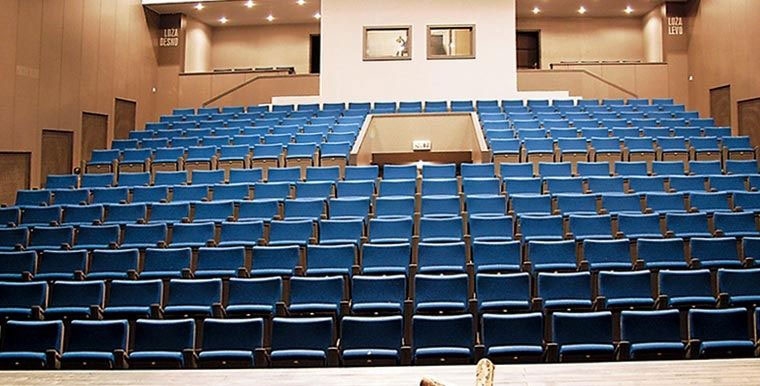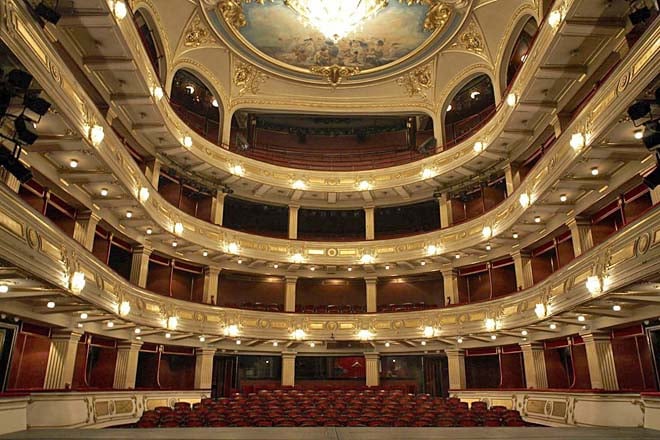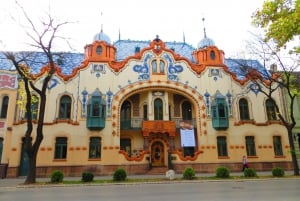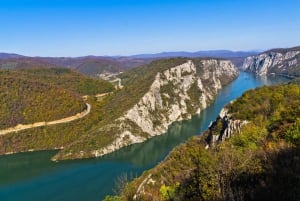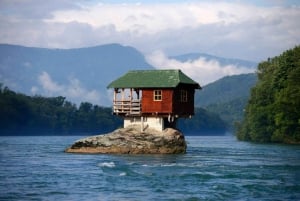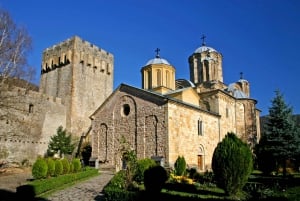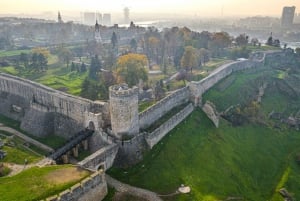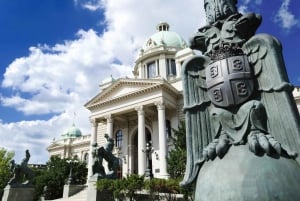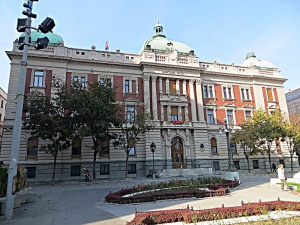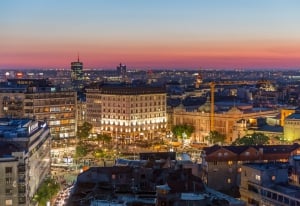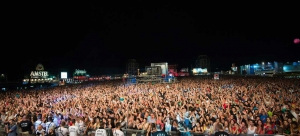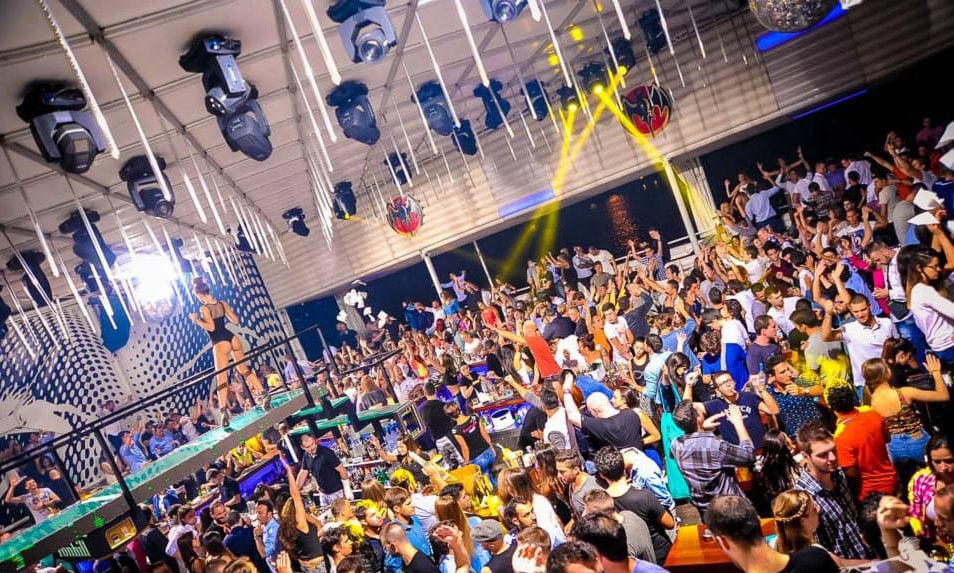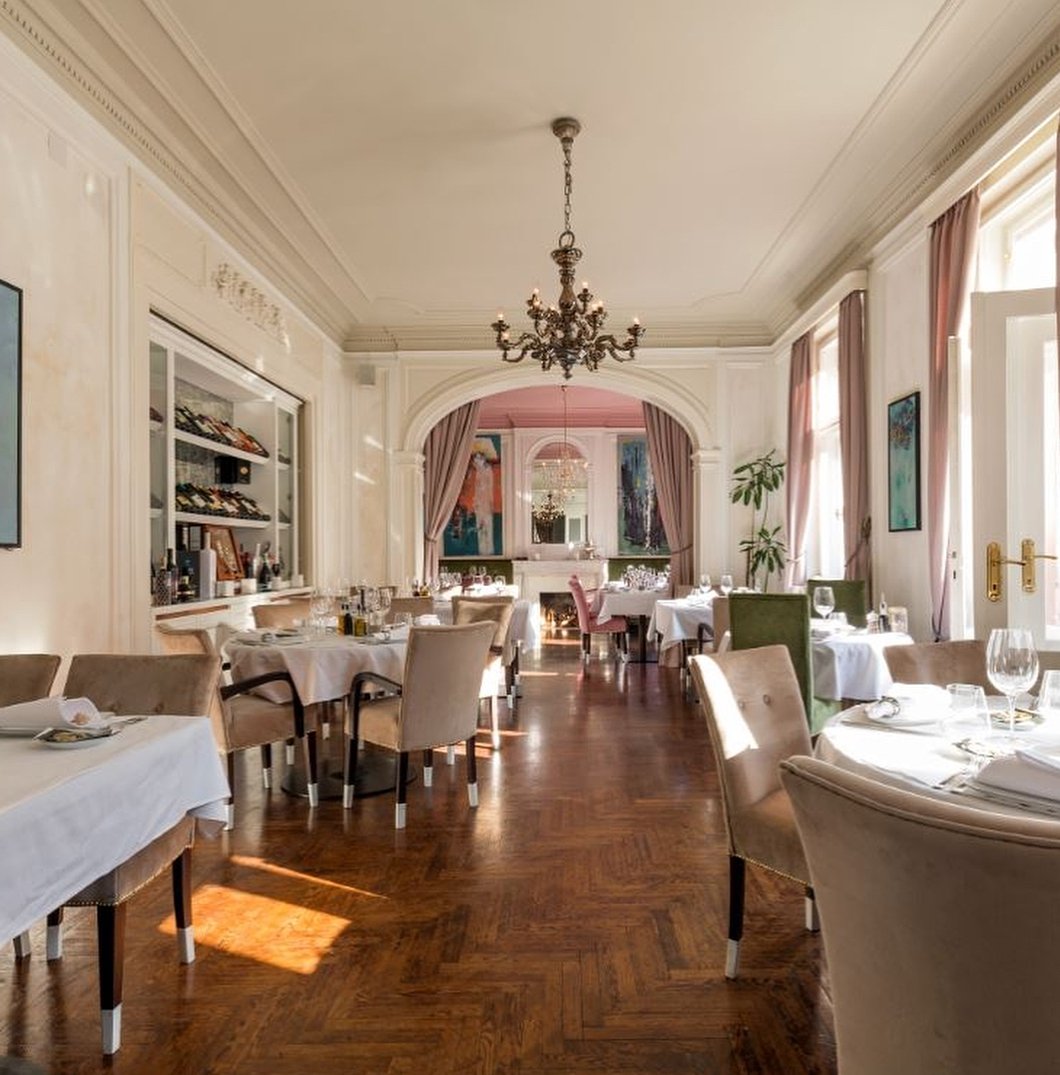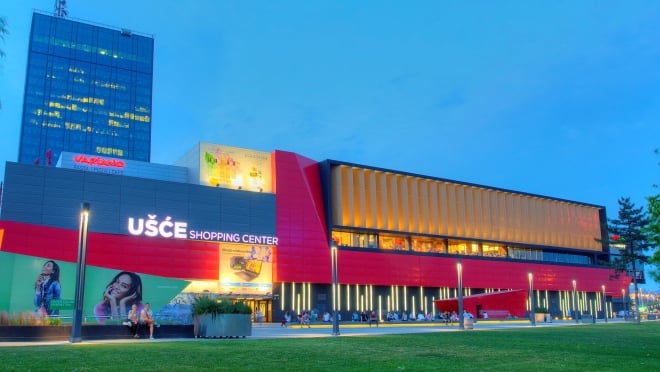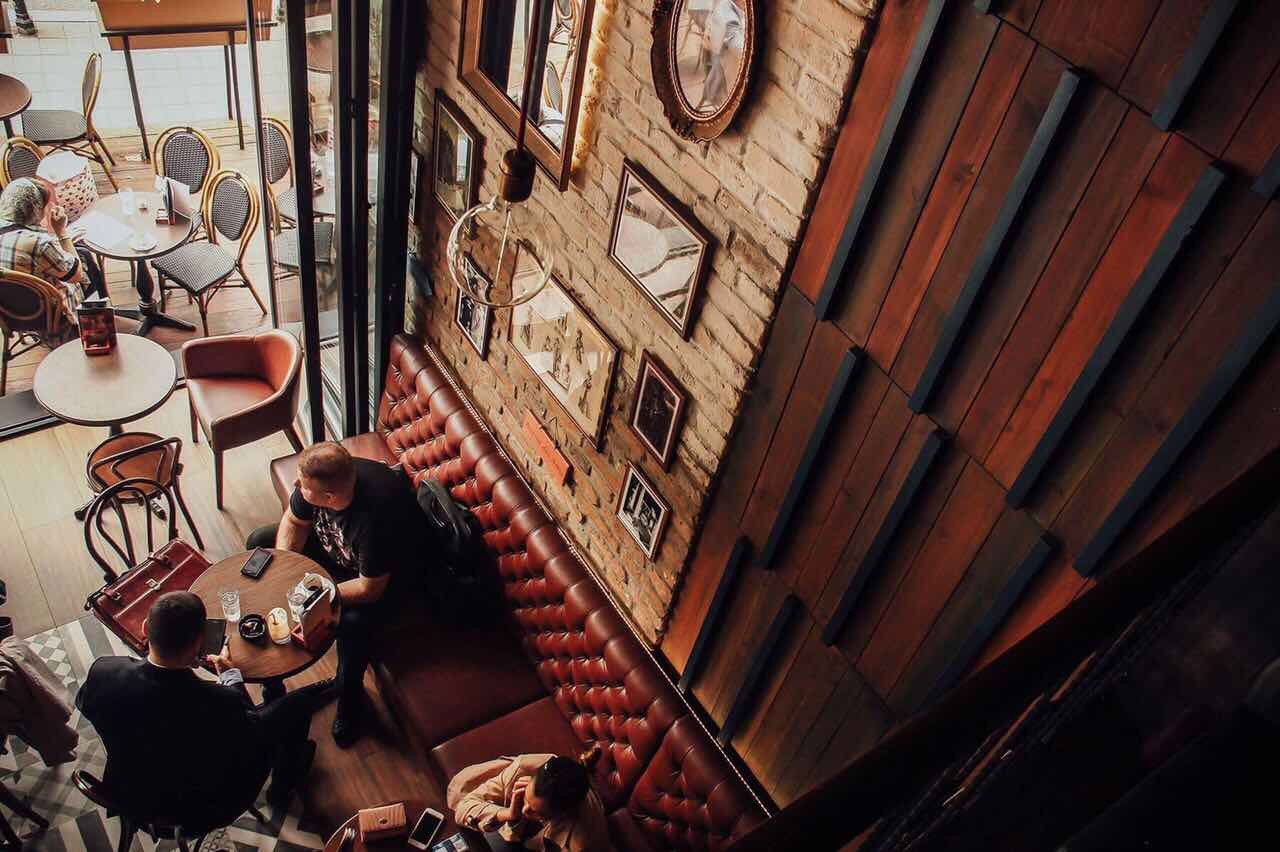Theaters
Book Top Experiences and Tours in Belgrade:
If youʻre booking your trip to Belgrade last minute, we have you covered. Below are some of the top tours and experiences!- Belgrade: Sunset Sightseeing Cruise with Drinks
- From Belgrade: Medieval Monasteries and Resava Cave Tour
- Belgrade: Top Attractions & Belgrade Neighborhoods Big Tour
- From Belgrade: Novi Sad & Sremski Karlovci Full-Day Tour
- From Belgrade: Tour to Lake Palić, Subotica, & Sombor
The National Theatre in Belgrade is a theatre in Belgrade located on the Republic Square, at the corner of Vasina and Francuska Street, in the very centre of the city. It was founded in 1868, and in the present building, in the place of the then Stambol Gate, it moved in 1869. Within it, the artistic units as Opera, Ballet, and Drama are functioning, and performances are held on the Great Scene and the "Raša Plaović" scene. Today, it is one of the most representative and most important cultural institutions of Serbia.
The National theatre awards the Plaque of the National Theatre as a prize.
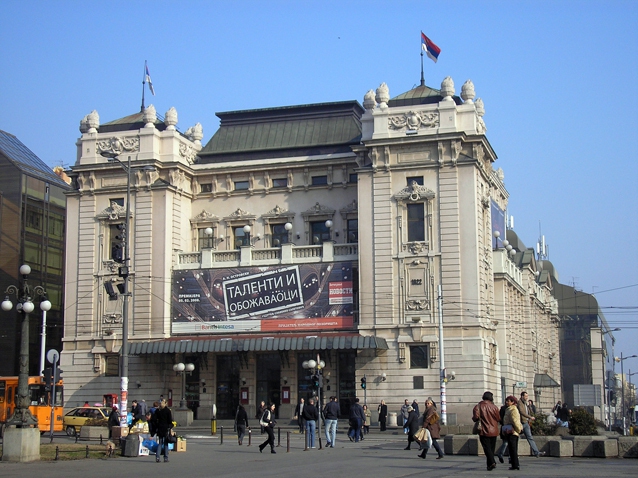
The Yugoslav Drama theatre
The Yugoslav Drama theatre was founded in 1947 as a representative theatre of the new Yugoslavia. Many of the most important actors from Zagreb, Novi Sad, Sarajevo, Split, Ljubljana and other cities are invited to participate in the creation of this theatre.
The Yugoslav Drama theatre became a theatre of an exceptional level, which with its results rose above other theatres in the country. The spirit, significance, and prestige of the Yugoslav Drama Theatre, known to the elderly, but also in a different way close to the audience who have formed their taste in the theatre since the mid-1980s.
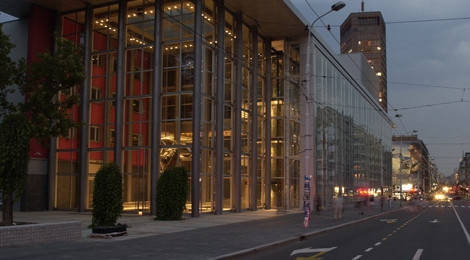
THE TERAZIJE THEATRE
The Terazije Theatre was founded on December 22, 1949, by the Assembly of the City of Belgrade as a "The Humourous Theatre", a permanent, repertory institution of theatre culture, music and comedy genre. From 1954 to 1959 it was called "The Belgrade Comedy". By merging with the Belgrade Drama Theatre in 1959, it got the name "Contemporary Theatre" until 1972 when it is named "Belgrade Theatre". Finally, in the theatre season 1975/76, it again becomes independent and gets the current name "The Terazije Theatre". During the period of reconstruction of the home building and evictions at the Cultural Centre "Vuk Karadžić" from 1991 to 2005, the theatre was named "The Theatre T".
As a unique theatre in our country, there is a permanent administrative-technical and performing composition consisting of acting, ballet, choir, and orchestral ensemble, a total of about 200 people, as well as a number of external associates of a wide range of artistic and performing arts. For more than 60 years of existence, always well accepted by the broadest audience, but also by critics, the Terazije Theatre, with its consistent repertoire, has been monitoring events on the world music and comedy scene. It especially nurturing and developing domestic drama, comedy, operetta and musical pieces.
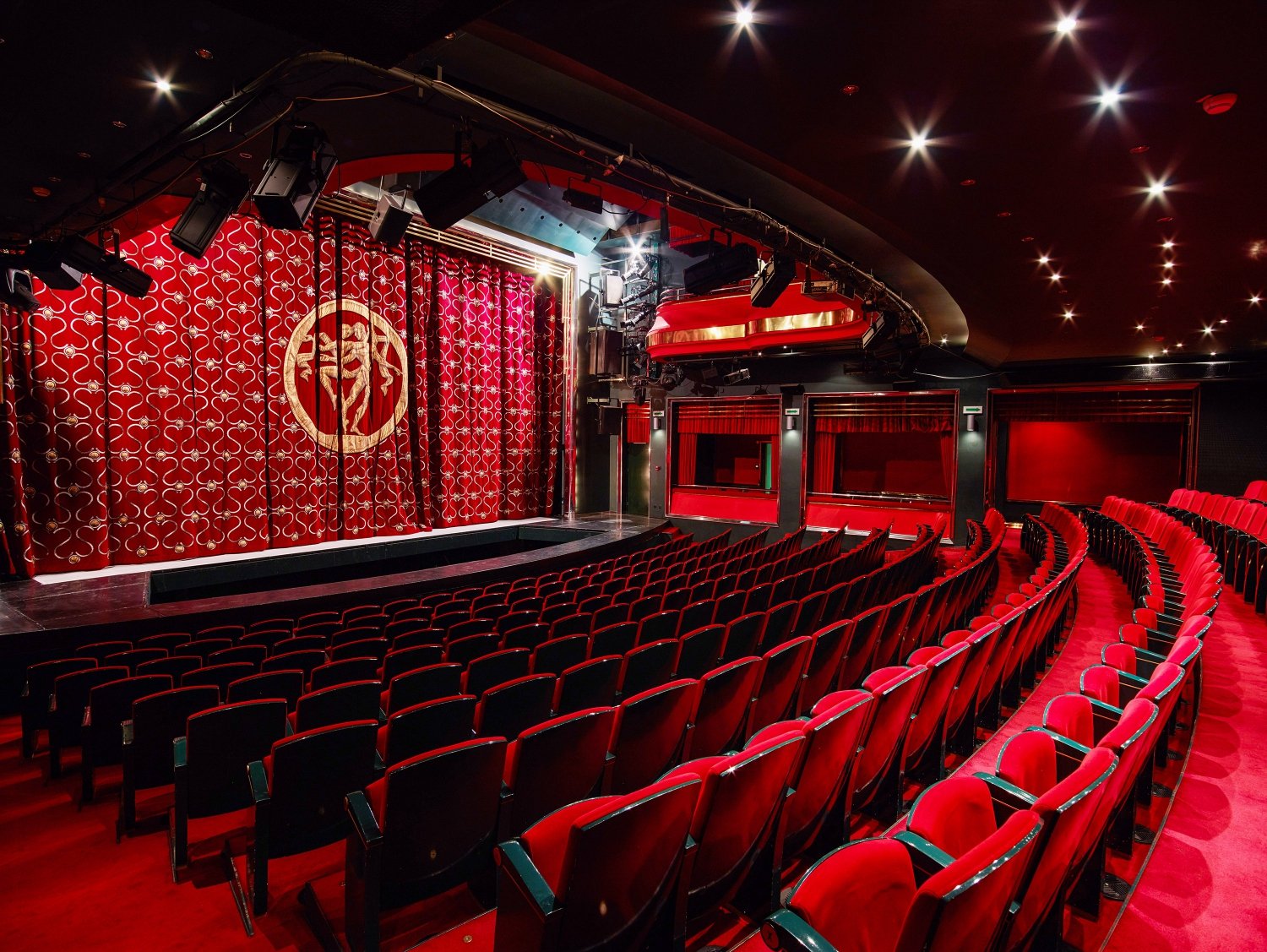
Opera and theatre Madlenianum
Madlenianum was founded on January 26, 1999, in a building where was previously a second building of the National Theatre in Belgrade
Opera and theatre Madlenianum, the first private opera and theatrical company, both in Serbia and in Southeast Europe, was founded by Madeleine Zepter, wife of Philip Zepter, a Serbian businessman. Madlenian's name comes from the name Madlene Zepter.
After seven years of work and five different stages of reconstruction, on April 19, 2005, a completely renovated, reconstructed, and conceptually enriched building opened its doors to the public. It is located in the old town of Zemun, which is a spatial cultural and historical part of the city. The theatre features opera, ballet, concerts, as well as a drama and music program.

The Belgrade Drama Theatre
The Belgrade Drama Theatre (BDT) (formerly the Belgrade Contemporary Theatre) was founded in August 1947 and was the first city theatre formed in Belgrade after the Second World War. The first premiere of "The youthfulness of Fathers" by Boris Gorbatov directed by Petar S. Petrović was performed on February 20, 1948, at the National Theatre Hall.
In the mid-fifties and early sixties of the 20th century, it had its "golden" period, largely thanks to the highly successful performances of contemporary American drama writers and playwrights of top actors, directors, scenographers, costume designers ... who, with their talents, celebrated the scene in the Red Cross. Legendary performances "Death of a Salesman", "Cat on a Hot Tin Roof", "The Glass Menagerie", "Mother Courage", "A view from the bridge" ... are even today remembered by generations of viewers who were lucky to see them.
Today, it works with a permanent artistic ensemble and continues the tradition created by performing classical and avant-garde drama literature, creating and maintaining its distinctive style and artistic expression. In the spring of 2003, a fundamental reconstruction of the theatre building was completed at the level of high European standards.

ATELJE 212
The "Atelje 212" theatre was founded on November 12, 1956, in "Borba" premises. The first performance was "Faust" directed by Mira Trailović. "Atelje 212" was founded by a group of artists (directors, actors, writers ...) with the desire to create a theatre in which will be performing pieces of the avant-garde in relation to other theatres in Belgrade.
In "Atelje 212", the performance "Waiting for Godo", by Samuel Becket, was played for the first time in one of the countries of Eastern Europe. Soon, the "Atelje" featured pieces of avant-garde writers such as Sartre, Ionesco, Jarry, Schisgal, Kopit, Genet...
Today, "Atelje 212" has a permanent 32-member ensemble, but it is open to those artists who are not permanently attached to this theatre.
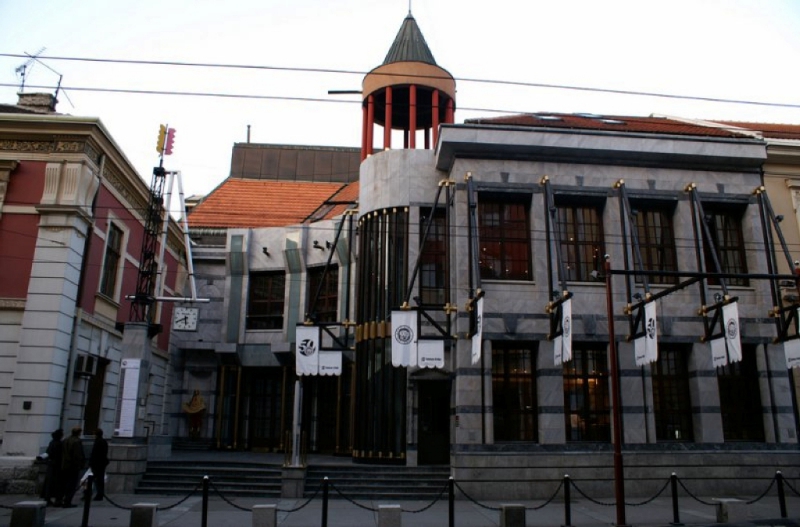
THE BITEF THEATRE
The Bitef Theatre was founded in 1989 in the reconstructed German Evangelical Church near Bailon's greenmarket. It is in front of the small square called "Mira Trailović Square". The role of the Bitef Theatre from the first days was, in addition to the realization of the Bitef Festival, the expansion of the effects of the festival and new theatre tendencies throughout the year.
The concept of the Bitef Theatre remained the same today. It is open to all kinds of new expressions, to overcome the established limits, to explore and support the artists who are ready for brave steps. The Bitef Theatre is trying to show that a theatre is an institution that creates culture, and not one that only submits to a certain cultural model. That's why special attention is paid to the theatre aspects that are underdeveloped in the local theatre, such as contemporary dance and theatre movements. The Bitef Theatre is organized by the reputation of modern European theatres, and does not have an ever-engaged artistic ensemble, but engages in projects.

THE ZVEZDARA THEATRE
The Zvezdara Theatre is a Belgrade theatre founded in 1984. By autumn 2009, when the theatre was celebrating twenty-five years of work, 65 premiers were held in the Zvezdara Theatre.
The Zvezdara Theatre was established with a specific aim to promote pieces of contemporary Yugoslav writers, and in organizational terms, brings together directors, actors and other staff according to the project, hence without engaging a permanent ensemble. The theatre rooms were moved to the premises of the Cultural Centre "Vuk Karadzic", where was held the first performance, a play by Aleksandar Popovic "The Spawning of Carp" directed by Dejan Mijač on October 8, 1984. The rooms are still in the building from 1955 since the theatre scene that was adapted several times has been moved to the former cinema hall. The grand stage of the Zvezdara theatre, renovated last time in 2001, can accommodate 700 visitors. It is planned that, from March 2010, the Great Scene will bring the name of actor Danilo Bata Stojkovic who played the most plays in the Zvezdara Theatre, a total of 1 102.
Although some of the works by foreign authors have been performed in this theatre since 2001, the trademark of Zvezdara theatre are pieces by Dusan Kovacevic, a playwright, who has been director of the theatre since 1998. Apart from the dramas of Dusan Kovacevic, the works of Aleksandar Popovic and Sinisa Kovacevic are most often played.
